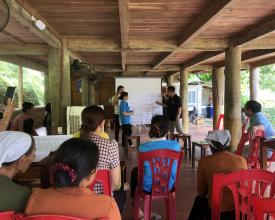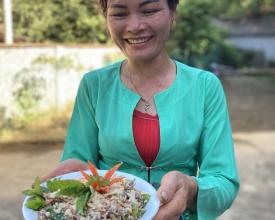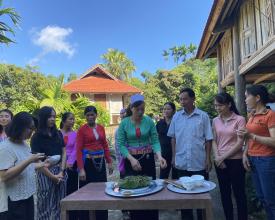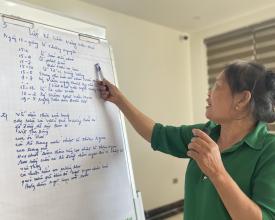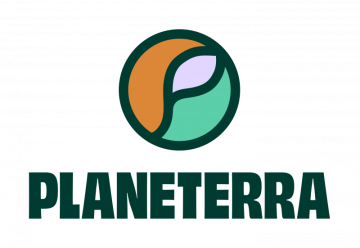
Desarrollo de productos para zonas protegidas con especial atención al aspecto comunitario
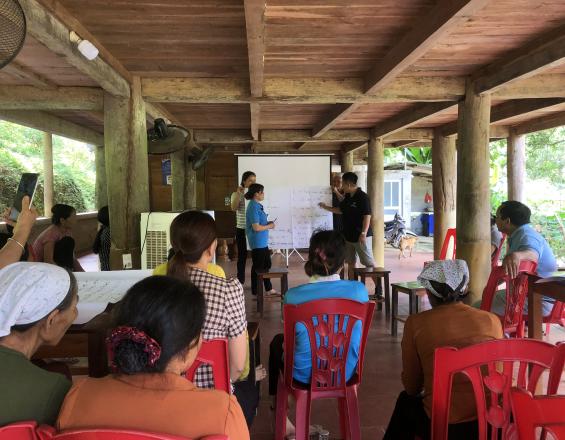
El turismo comunitario puede brindar grandes oportunidades a las comunidades que viven en las zonas protegidas y sus alrededores. Sin embargo, para prosperar en el sector turístico, no basta con tener recursos naturales y culturales que la gente pueda visitar. Antes de hablar de desarrollo de productos, es crucial comprender dos cosas: cómo se sienten las comunidades respecto al turismo, ¿están dispuestas a trabajar en el sector? y ¿cuál es el estado actual del turismo en la localidad?
Esta información puede obtenerse mediante encuestas y observación. Una vez que se tiene la certeza de que la mayoría de los miembros de la comunidad están deseosos de trabajar en turismo, el siguiente paso es determinar qué formación necesitan para el desarrollo del producto.
En el caso de las comunidades del Parque Nacional de Cuc Phuong y la Reserva Natural de Van Long, la formación impartida se centró en productos ecoturísticos y desarrollo de itinerarios, salud y seguridad y marketing. Con esta formación, las comunidades pudieron desarrollar productos turísticos para poner de relieve sus recursos naturales y culturales.
Contexto
Défis à relever
-
El turismo comunitario era escaso o nulo en las dos áreas protegidas seleccionadas, lo que dificultaba el desarrollo de las capacidades de las comunidades en un corto plazo de tiempo. Entre los hogares entrevistados, sólo el 3,2% y el 1,5% de los hogares del PN de Cuc Phuong y la RN de Van Long, respectivamente, obtenían la mayor parte de su sustento del turismo antes del COVID.
-
Debido a la escasa práctica del turismo comunitario, las comunidades locales también carecen de buenas infraestructuras para proporcionar a los viajeros una estancia cómoda.
-
A pesar del alto porcentaje de encuestados interesados en aprender nuevas técnicas turísticas (>70%) y diversificar sus ingresos (>80%) a través del turismo, la gente sigue mostrándose reacia a participar en iniciativas turísticas sin un apoyo inicial.
-
Dado que la mano de obra principal tiene entre 36 y 65 años (65-67%) y se dedica a la agricultura/silvicultura (58-80% de los ingresos totales de los hogares), los participantes en la formación son en su mayoría de mediana edad en adelante y tienen una capacidad limitada para asimilar conocimientos modernos.
Ubicación
Procesar
Resumen del proceso
A través de los cursos de formación (BB1) se identificó a los "campeones locales". Desempeñan un papel importante en la dirección de esta iniciativa y son un ejemplo para otros miembros de la comunidad. A la hora de desarrollar los itinerarios turísticos, esos "campeones locales" fueron los principales miembros de su comunidad que participaron en el proceso e impartieron la visita (BB2). Por último, una vez finalizados los itinerarios, fue necesario probar el producto para recibir comentarios y realizar ajustes (BB3).
Bloques de construcción
Contenidos de formación contextualizados
-
El proyecto se diseñó con contenidos de formación predefinidos en 3 temas: (i) Salud y Seguridad; (ii) Desarrollo de Itinerarios y Productos; (iii) Marketing y Promoción, dirigido a empresarios turísticos de la comunidad, personas interesadas en trabajar en turismo en las APs y zonas de amortiguamiento, gestión de APs y otro personal involucrado en la gestión de APs.
-
Tras realizar un estudio de referencia para comprender el contexto local general y los principales actores de la comunidad, el contenido de la formación prediseñada se contextualizó para adaptarlo al público principal de los talleres de formación.
-
Las distintas partes interesadas tienen una capacidad de aprendizaje incompatible. Por lo tanto, el contenido de la formación se simplificó con contenidos separados para las comunidades y para los hogares / individuos que desean profundizar en los temas.
-
La contextualización también ayuda a acercar los conocimientos a los participantes.
-
Como los jóvenes van a trabajar de día, la mayoría de los participantes en los talleres de formación eran de mediana edad. Un método de formación convencional, que es la comunicación unidireccional, no funciona en este caso. Se hizo una planificación detallada de la facilitación para asegurarse de que todos se sintieran implicados en la formación. Algunos de los métodos que se utilizaron fueron: debate en grupo, mapeo de recursos, pequeños juegos con puntuaciones y premios, etc.
-
Factores facilitadores
Los miembros de la comunidad local reciben una introducción al turismo comunitario y una visión general de las habilidades básicas necesarias para desarrollar el turismo comunitario en el contexto de las áreas protegidas. A los que no tienen previsto dedicarse pronto al turismo, la formación les ofrece una perspectiva para el desarrollo comunitario, de modo que puedan plantear con confianza sus preocupaciones sobre el bienestar y los beneficios de su comunidad en caso de que llegue un inversor privado.
Lección aprendida
Cuando se trata de formación en la comunidad, es necesario un enfoque más interactivo para crear diálogos y dinámicas bidireccionales. Se observó claramente que cuando se dan más oportunidades para hablar y un espacio seguro para decir lo que piensan, la gente está más dispuesta a comprometerse y a apropiarse de sus iniciativas. Por ejemplo, cuando se les pidió que trazaran un mapa de los recursos de su comunidad disponibles para ofrecer a los turistas, uno de los pueblos dibujó un mapa de su comunidad con una visión clara de quién-ofrece-qué. Además, aunque el siguiente paso no formaba parte de la formación ni era un resultado exigido, los mismos aldeanos idearon activamente su propio plan de acción para crear una atmósfera segura para que los turistas disfrutaran de la belleza del pueblo.
Fomento de la propiedad del producto
-
Durante la formación, se diseñaron muchos ejercicios para la participación de la comunidad local. Esta es también una buena forma de obtener información de la población local sobre su comunidad. Uno de los ejercicios de la formación para la elaboración de itinerarios turísticos animaba a los participantes a planificar una excursión de un día completo en la que se incluyeran paisajes y alimentos notables dentro de su área local. No obstante, hay que tener en cuenta que los participantes pueden tener opiniones diferentes sobre lo que es "notable" o "bello".
-
Los talleres de formación también ofrecieron una buena oportunidad para identificar a los "campeones locales" que inician de buen grado la prestación de servicios y productos turísticos en sus comunidades. Se llevó a cabo una evaluación de las condiciones de las infraestructuras y de sus puntos fuertes/características únicas para ver cómo sus historias alimentan el tema general/las rutas de los itinerarios (la mayoría de los cuales se construyeron a partir de las aportaciones de los participantes en la formación).
-
No sólo la actividad de la excursión, sino también la narración de historias fue importante para transmitir el mensaje a los clientes. Se pidió a los participantes en la formación / "campeones locales" que crearan un esquema de lo que querían presentar a los clientes.
-
Se ajustaron los itinerarios completos de las excursiones, se finalizaron y se prepararon para las pruebas.
Factores facilitadores
Los itinerarios diseñados inicialmente presentan tanto el trabajo de conservación del AP como el de la comunidad. Sin embargo, los conocimientos de los residentes sobre el aspecto de conservación no eran suficientes para guiar la visita. Por lo tanto, la atención se centró en el aspecto comunitario de los itinerarios turísticos. Este enfoque permite a los visitantes conocer la vida de las comunidades locales en armonía con la naturaleza en las AP, al tiempo que se pone de relieve la labor de conservación a nivel de base. Además, los miembros de la comunidad tienen más confianza para contar su propia historia desde su perspectiva.
Lección aprendida
La mayoría de los participantes seguían mostrándose reticentes a emprender iniciativas turísticas sin un apoyo financiero inicial. En este caso, contar con líderes locales que mostraran de forma proactiva su interés por iniciar algo nuevo en la comunidad fue de gran ayuda. A menudo, ya disponen de otros medios de subsistencia o sus hijos o cónyuges se ocupan de la economía familiar. Son esos campeones locales los que desempeñarán un papel importante a la hora de definir y dar forma al turismo en su comunidad y de servir de ejemplo a otros miembros de la comunidad.
Perfeccionamiento y pruebas del producto
Una vez terminada la formación y diseñados los itinerarios de las excursiones, los miembros de las comunidades del Parque Nacional de Cuc Phuong y la Reserva Natural de Van Long estaban listos para poner a prueba sus recién adquiridas habilidades.
En lugar de organizar viajes de familiarización con operadores turísticos, organizar excursiones piloto con visitantes reales tendría un impacto más significativo y práctico para las comunidades. Al acoger estas excursiones piloto, los miembros de la comunidad tendrían la oportunidad de estar expuestos a diferentes mercados y de poder practicar sus actividades en circunstancias reales.
En ese sentido, se propusieron dos itinerarios inmersivos, dirigidos tanto al público internacional como al nacional residente en Hanói, al que se incentiva a pagar una tarifa del 50% del paquete como donativo para las comunidades de las áreas protegidas y contribuir a su desarrollo.
Factores facilitadores
Como la mayoría de los campeones locales son nuevos en el turismo, se necesita tiempo para que se acostumbren al concepto, comprendan lo que significa realmente el turismo comunitario y empiecen a aprender las técnicas básicas para recibir a los turistas. Aunque los itinerarios turísticos se hayan diseñado y tengan buena pinta sobre el papel, eso no significa que el viaje esté listo para el mercado. La incorporación de operadores turísticos en esta fase inicial puede ser más perjudicial que beneficiosa. Por ello, los viajes de prueba permitieron obtener información sobre el producto y mejorar las habilidades antes de introducirlos en el mercado.
Lección aprendida
En Van Long, los visitantes quedaron impresionados por la hospitalidad de la población local y apreciaron la formación impartida a las comunidades locales por el Proyecto. Junto a los aspectos más destacados, también se señalaron algunas mejoras. Por ejemplo, las experiencias adicionales o factibles pueden ampliarse cuando los anfitriones locales estén más familiarizados con la acogida de huéspedes; o el horario y la ruta del paseo en barco pueden adaptarse en función de la temporada y los visitantes.
En Cuc Phuong, los aldeanos de Khanh llevan mucho tiempo recibiendo a huéspedes que hacen senderismo desde el centro Bong del Parque. Por ello, tardaron poco en poder organizar la nueva experiencia, que consiste en la clase de cocina en combinación con una experiencia de senderismo. Como el itinerario se diseñó para reducir la dependencia de la aldea del turismo del Parque, la ruta por la que se realiza el senderismo y la recogida de verduras queda fuera del territorio del Parque.
Impactos
-
Se impartieron 03 cursos de formación en 05 pueblos seleccionados, con contenidos contextualizados en función de los recursos y conocimientos locales.
-
Formación en desarrollo de productos: 193 participantes
-
Formación en salud y seguridad: 183 participantes
-
Formación en marketing y promoción: 138 participantes
-
-
Se diseñaron 04 nuevos itinerarios turísticos basados en las aportaciones recogidas durante la formación en desarrollo de productos con las comunidades locales, en la que se pusieron a prueba 02 itinerarios.
-
En Van Long y Cuc Phuong se organizaron un viaje de aprendizaje y 03 viajes de prueba con un total de 10 visitantes, que beneficiaron directamente a 12 proveedores de servicios con unos ingresos totales de 451,00 USD. Durante la pandemia, no recibieron a ningún visitante (por tanto, ningún ingreso por turismo).
Beneficiarios
Los habitantes de 5 aldeas seleccionadas en el Parque Nacional de Cuc Phuong y la Reserva Natural de Van Long y sus alrededores.
